
[EDITOR’S NOTE: We are please to offer our readers the first part of George Poulos’ wonderful in-depth series of pieces focusing on the Comprehensive Costs of Transportation and Metro Vancouver (CCT). You can read the Introduction here.]
In March of 2013, Frances Bula wrote a wonderful and thought provoking article entitled “British Columbia’s transit dreams”, which opened by imagining some very industrious changes in the Region by the year 2020. You see, both the $1.8 billion Surrey LRT system and the $3 billion Broadway subway have recently been completed. In no small way, these two systems have helped to see transit mode shares in the Metro Region rise well on their way to the target objective of 50 percent of all trips by 2040.
However, enabling such lofty prospects will not be without their difficulties. Leaving aside the questions surrounding the transit referendum (Frances forgot to tell us how that one ended up), completing not one, but two major transit projects in quick succession will represent a great success in both the public and political realms. However, Bula suggests the real hurdle to this reality would come not from a political impediment, but as a matter of securing the necessary funding. According to Translink Vice President Bob Paddon, the magic number needed for every major transit project of the future is $23 billion, which Bula pegs at about $700 million dollars per year, over the next 30 years.
No doubt a large sum of money will be required to keep the region healthy, moving and competitive into the future. But, there are other costs we might consider. Total costs. Hidden costs. The cost of doing nothing, or even making an incomplete attempt at accommodating trip making growth in the Region. While this can be well personified by the stark contrast in image between clogged roads (or packed buses) and convenient, efficient transit options, the bigger picture extends beyond the fate of future transit plans. It has to do with long standing public beliefs regarding user preferences, entitlements, and future expectations, as well a willingness by governments to prioritize multimodal transportation and the land use patterns which enable it.
We can understand this by considering the wider costs of transportation. It is well understood that everyday transportation imposes a variety of impacts on individuals, society, the environment, and the economy. These may include congestion, air pollution, public transit costs and many others. Of course, these impacts may vary to considerable degrees when considering the particular mode of transportation. They may also vary as a matter of “perspective”. As a general principle, costs (or benefits) may be interpreted as either internal or external to the consumer/user. Internal costs (also called ‘personal costs’) are those that are borne directly by the user in normal market transactions. These include transit fares, the price of gasoline, or the cost of a bicycle. However, costs resulting from transportation activities that are not redeemed by the user are necessarily off-loaded onto society. These are known as external (or ‘societal costs’). These can include the impacts of congestion, the effects of pollution, or the cost of maintaining infrastructure.
Understandably, it is internal costs that resonate more with the individual, and characterize their perception of the cost and relative utility of a mode of transportation (however, even certain internal costs are not always apparent to the user). And yet, it is the external costs of transportation that impart the greatest – albeit hidden – significance on matters of regional, or long-term transportation planning. At least, that’s the idea.
To say that the study of transportation externalities has been neglected in Canada would be an understatement. Barely a blip on the radar of Transport Canada, they can be largely considered the purview of academics, and do not figure as prominently as they could (or should in my opinion) in decision making processes. For a suitable look at a deeper pool of relevant literature, the inquisitive reader must be referred to our European counterparts – some good examples would be Germany, Denmark, Sweden, or the UK. Here, these metrics have been quite rightly put to good use as inputs into policy making, and in evaluating investments in major infrastructure projects.
Either way, it is in considering both internal and external costs that we can gain an appreciation of the true measure of transportation costs. It was towards this goal that I set about laying down a process to measure these costs in the City of Vancouver. This encompasses all purpose transportation according to five modes: passenger vehicles, transit buses, the Skytrain, as well as walking and cycling. In total, 12 different cost components were considered and include those typically associated with motorized travel (such as congestion, pollution, infrastructure costs, etc.), internal costs (such as travel time and operating expenses), as well as the health benefits of active transportation.
In the end, costs and benefits are presented as a unit rate of cost per passenger-kilometer ($/p-km), and represent average aggregate values across the entire City of Vancouver. Results are illustrated in Table 1.0.
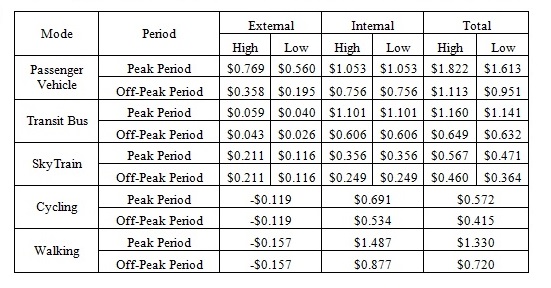
As an extension of these results, unit rates can be combined with transportation statistics (in this case, Vancouver’s share of data from the Translink 2011 Trip Diary Survey) to produce estimates of aggregated yearly external transportation costs and benefits for the City. These are illustrated in Table 2.0.
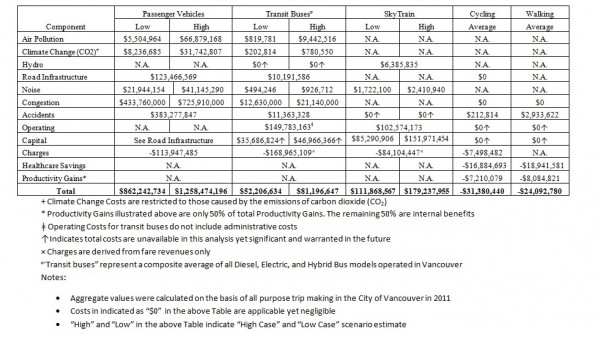
Of course, getting to the end results are only half the fun. Some of the best value, I believe, is in what these results foreshadow. Although this analysis was confined to the City of Vancouver, it nonetheless provides many interesting take-aways relevant to those issues at the forefront of today’s regional transportation context.
Some of these will be discussed in the coming next articles. Join us Wednesday as we look at transit investment….
***
Just in case you missed earlier pieces of The Comprehensive Costs of Transportation and Metro Vancouver
**
George Poulos, EIT, MSCP is a transportation engineer-in-training as well as a recent Masters graduate of the School of Regional and Community Planning (SCARP) at UBC. He has previously worked for consulting engineers on a variety of transportation and municipal projects. Originally from Ontario, he currently lives in Vancouver.

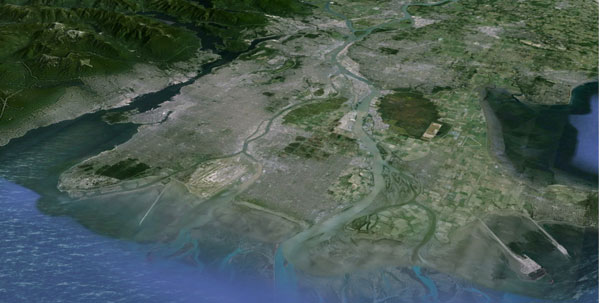
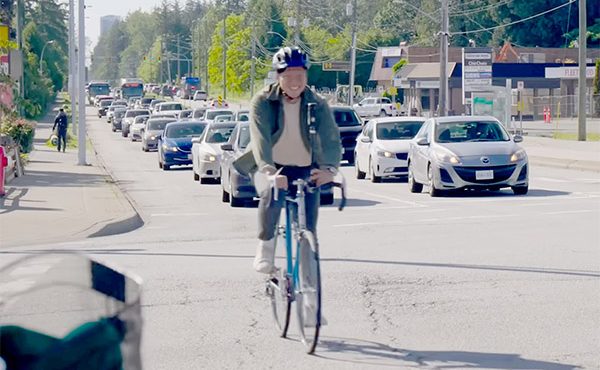
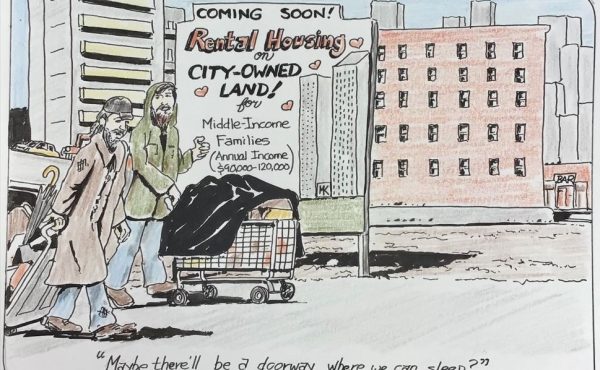
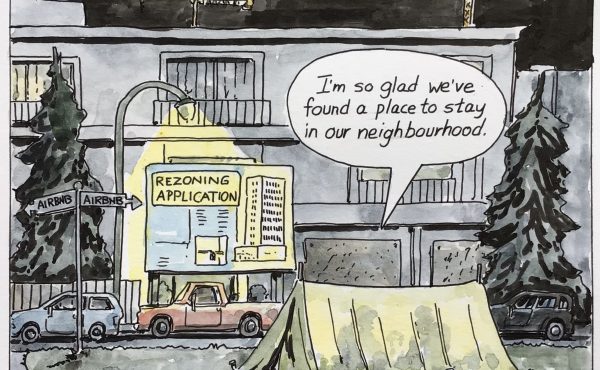
2 comments
Great post, thanks. Can you provide sources and calculation details for your estimates in Table 1?
Hi Reilly,
Thanks for your comment.
Where to begin,
Owing to the very complex nature of work like this, it is not very easily distilled into checklist form. The actual body of work runs well into the hundreds of pages, so I’m not sure I can give you a cogent summary of “sources and calculation details”, such as it is. The best answer I can give would be to refer you to the literature from which this work was drawn – that being the study of transportation externalities. Like I’ve mentioned in the series, these methods enjoy allot more traction in several European countries (e.g. the UK, Denmark, Sweden) than they do here. You can find research to this effect over the web or by looking into government studies from said countries. That should give you an idea of the kinds of methods and data I was working with. As I’m sure you will discover, it’s not a matter of “details” and “sources”, but rather a vast body of literature across a variety of disciplines, each following distinct best practices/methodologies.